
A conductor or guard is a train crew member responsible for operational and safety duties that do not involve actual operation of the train/locomotive. The conductor title is most common in North American railway operations, but the role is common worldwide under various job titles. In Commonwealth English, a conductor is also known as guard or train manager.

The Chicago "L" is the rapid transit system serving the city of Chicago and some of its surrounding suburbs in the U.S. state of Illinois. Operated by the Chicago Transit Authority (CTA), it is the fourth-largest rapid transit system in the United States in terms of total route length, at 102.8 miles (165.4 km) long as of 2014, and the third-busiest rapid transit system in the United States. In 2016, the "L" had 1,492 rail cars, eight different routes, and 145 train stations. In 2023, the system had 117,447,000 rides, or about 373,800 per weekday in the fourth quarter of 2023.
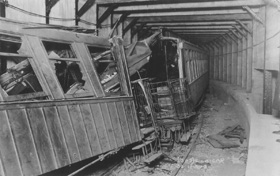
The Malbone Street wreck, also known as the Brighton Beach Line accident, was a rapid transit railroad accident that occurred on November 1, 1918, on the New York City Subway's BMT Brighton Line in the Flatbush neighborhood of Brooklyn in New York City. A speeding train derailed in the sharply curved tunnel beneath Willink Plaza, the intersection of Flatbush Avenue, Ocean Avenue, and Malbone Street. At least 93 people died, making it the second-deadliest train crash in American history, as well as the deadliest crash in the history of the New York City Subway.

The PCC is a tram design that was first built in the United States in the 1930s. The design proved successful domestically, and after World War II it was licensed for use elsewhere in the world where PCC based cars were made. The PCC car has proved to be a long-lasting icon of streetcar design, and many remain in service around the world.
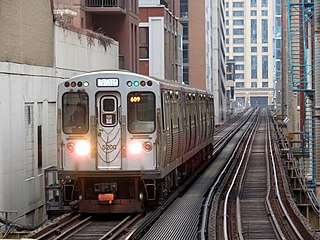
The Green Line is a rapid transit line in Chicago, Illinois, operated by the Chicago Transit Authority (CTA) as part of the Chicago "L" system. It is the only completely elevated route in the "L" system. All other routes may have various combinations of elevated, subway, street level, or freeway median sections.

A Birney or Birney Safety Car is a type of streetcar that was manufactured in the United States in the 1910s and 1920s. The design was small and light and was intended to be an economical means of providing frequent service at a lower infrastructure and labor cost than conventional streetcars. Production of Birney cars lasted from 1915 until 1930, and more than 6,000 of the original, single-truck version were built. Several different manufacturers built Birney cars. The design was "the first mass-produced standard streetcar " in North America.

A motorman is a person who operates a tram (streetcar), light rail, or rapid transit train. A motorman is in charge of operating their train, applying power to traction motors, in the same sense as a railroad engineer is in charge of the engine.

The Chicago City Railway Company (CCRy) was an urban transit company that operated horse, cable, and electric streetcars on Chicago's South Side between 1859 and 1914, when it became merged into and part of the Chicago Surface Lines (CSL) metropolitan-wide system. After that time it owned electric streetcars, along with gasoline, diesel, and propane – fueled transit busses. Purchased by the government agency Chicago Transit Authority (CTA) in 1947, it was liquidated in 1950.

The Chicago Surface Lines (CSL) was operator of the street railway system of Chicago, Illinois, from 1913 to 1947. The firm is a predecessor of today's publicly owned operator, the Chicago Transit Authority.
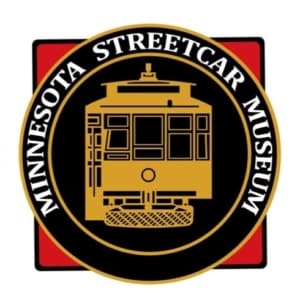
The Minnesota Streetcar Museum (MSM) is a transport museum that operates two heritage streetcar lines in Minneapolis, Minnesota, and the western suburb of Excelsior.
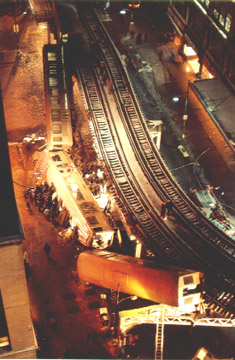
The 1977 Chicago Loop derailment occurred on February 4, 1977, when a Chicago Transit Authority elevated train rear-ended another on the northeast corner of the Loop at Wabash Avenue and Lake Street during the evening rush hour. The collision forced the first four cars of the rear train off the elevated tracks, killing 11 people and injuring at least 268 as the cars fell onto the street below.
The current rolling stock of the Chicago "L" rapid transit system consists of four series of railcars. The oldest series is the 2600-series which was built between 1981 and 1987 and refurbished between 1999 and 2002. The second series is the 3200-series, built between 1992 and 1994 and refurbished between 2015 and 2018. The third and newest series is known as the 5000-series; built between 2009 and 2015, they feature new technologies such as LED color signs, security cameras, new seating configuration, AC motors, and interior LED signs displaying date and time. The most recent order consists of the 7000-series cars that are planned to replace the 2600-series cars, with options for additional cars that would replace the 3200-series cars.

The Edmonton Radial Railway (ERR) was a streetcar service that operated in Edmonton, Alberta, from 1908 to 1951. It was Edmonton's first public transit service, and later evolved into Edmonton Transit Service. Beginning as a small agency with 21 kilometres (13 mi) of track and four streetcars, the ERR would eventually operate more than 70 streetcars on over 90 kilometres (56 mi) of track, reaching most areas of the city. At its peak in 1929, the ERR served more than 14.1 million passengers.
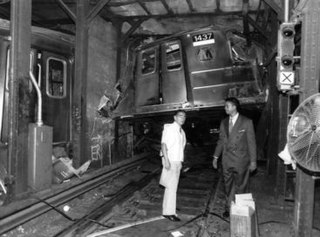
On August 28, 1991, a 4 Lexington Avenue Express train on the New York City Subway's IRT Lexington Avenue Line derailed as it was about to enter 14th Street–Union Square station, killing five people. It was the worst accident on the subway system since the 1928 Times Square derailment. The motorman was found at fault for alcohol intoxication and excessive speed, and served time in prison for manslaughter.

The Madison Street bridge disaster occurred on November 1, 1893, in Portland, Oregon, United States, when a westbound streetcar drove off the open draw of the first Madison Street Bridge. Seven people died. This remains the worst streetcar accident ever to occur in the city of Portland and also the worst bridge disaster in Portland history.

On November 7, 1916, a streetcar loaded with passengers ran off the open Summer Street Bridge, a drawbridge, into Fort Point Channel near downtown Boston, Massachusetts, United States. Forty-six passengers were killed, making it the deadliest disaster in Boston's history until surpassed by the Cocoanut Grove fire in 1942.

The Fillmore Counterbalance was a streetcar device operated by the Market Street Railway (MSRy) in San Francisco. It aided the company's 22 Fillmore line in traversing the steep northern slope of Fillmore Street from 1895 to 1941. The weight of a descending car helped lift ascending cars. It was a unique operation for its use of mechanical cable haulage for an otherwise electrically-powered route.

















